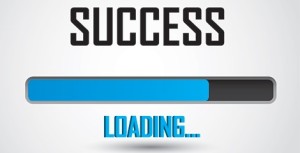 Virtual Events are popping up more and more often, and it’s no wonder why; cutting costs, extending reach, and less stress in planning make the virtual world appealing to businesses of all sizes. So how can we compare the success of virtual environments to the traditional in-person event?
Virtual Events are popping up more and more often, and it’s no wonder why; cutting costs, extending reach, and less stress in planning make the virtual world appealing to businesses of all sizes. So how can we compare the success of virtual environments to the traditional in-person event?
There are the obvious ways to measure success, like number of attendees and leads acquired. While these are quick and easy ways to assess events, these points alone do not show the full picture and therefore, the hosting organization misses essential information to measure the success of the event and what to build on for the next one. In order to fully understand how well an event has been implemented, we need to ask ourselves questions which analyze the event on a deeper level.
- Did the attendees and presenters interact?
A large portion of those attending an event do so for the networking aspect. Some may assume that the virtual world lacks this sort of person-to-person interaction, but there are actually more opportunities to communicate with one another. Attendees have the ability to engage in multiple conversations at once and feel more comfortable asking questions. They can also revisit these conversations after the event! Make sure to utilize and promote these features before, during, and after the event.
- What percent of registered users actually logged on to the event?
Whether someone forgets about the event or has a conflicting schedule, having 100% attendance is difficult at any event; so it is understandable that virtual events would have similar obstacles. Providing teasers and reminders will help keep the prospective attendees’ interest, but follow-up is just as important. Just like a good car, if it operates well and gets the job done, customers will return. Keeping updated, open communication pre and post- event will generate better outcome in attendance.
- How long did the attendees stay at the event?
Although attendance is a tried and true way of measuring event success, it doesn’t give an idea of how many attendees actually used the interface once they logged in. Generally, if attendees stay online for at least 90 minutes, they get a good feel for the materials and information provided. Interactive features and live communication engages the audience, prolonging their visit and allowing them to learn more.
- How many people visited the On-Demand archive post-event?
It’s always exciting to see the analysis after an event. The data says a lot about the success of the hard work put in, but don’t forget to add in the revisiting data at the conclusion of the archive period. This detail is easy to overlook but gives a broader idea of how your event was perceived.
- Were there common trends in questions and suggestions?
If there is a question or suggestion from the attendees that appears to be a theme, it may be useful to make this a section in future events. Listen to your audience. It will not only save time in the future but will also improve the quality of your attendees’ experience!
- What was said about the event?
Formal measuring tactics like surveys are always useful, but they only cover a limited area of the information. Monitoring social media platforms and comments left on forums can give an idea of the audience’s true feelings after they’ve had time to think about and review the experience. Responding to posts, whether it’s positive feedback or constructive criticism, will show that your organization values the feedback as well as provides another form of open communication.
Conclusion
There is no clear cut, right or wrong way to analyze the success of an event. The key is to collect as much information as possible to understand what works and what does not to build on in the future, as well as maintaining communication with the audience from beginning to end.
How do YOU measure event success? Let us know!